#ellenistic
Text

Pygmalion

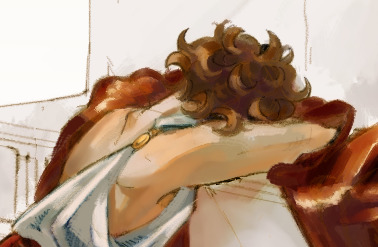

the rendering of the statue is unfinished because the statue itself is equally unfinished
#[.art]#Pygmalion#greek myths#except I am making this gay & transgender & about me. Heart emoji#self#gay#transgender#<- slides this into the tags. is it about carving your perfect lover or your perfect self. You won't know#ellenistic#classicism#classical mythology#greek mythology
361 notes
·
View notes
Text
The myth of Hades and Persephone
Hi, greek and roman culture student here!
I've always been fashinated by the myth of Hades and Persephone, and I've heard a lot regarding the "original" version, and I thought I could offer some of my knowlege to better understand the culture behind it.
The "original" version
I'm afraid that, expecially in Greek mythology, there is no such thing as an "original version" of a myth. All the different version are valid because they're the expression of a different Greek region (an let me tell you, those were WIDELY different culturally and in the folklore). There is surely some that are more famous than others, but being famous doesn't mean anything, it's just a version as valid as the others.
Also, all the greek myths originate from Minoan and Mycenaean myths, really different from the ones we know today.
To make an example, in the Minoan version of this story, Hades isn't featured at all, Persephone's the wife of Poseidon.
Marriange and Rapture
In arcaic greek language the words for marriage and abduction were the same one, lately evolving into a word for abduction (άρπαγή) but no proper word for marriage, that was indicated with γάμος, that is a widely ranged term to indicate a family in general.
Also, in the arcaic civilisation the ritual for matrimony had a simulation of kidnapping of the bride by her future husband, and in some regions, like Sparta, this tradition remained well into the classical and ellenistic period of Greece.
This is furtherly illustrated in pottery decoration, were the pose that indicates marriage and the one that indicates abduction are one and the same.
For the Greeks, marriage and kidnapping were pratically synonyms, and that's why we have so many myths with the rapture of a woman that in some version are simply indicated as a marriage (Hades and Persephone, Helen and Parides) or an elopement (Europe, Io, half of Zeus' love affairs). In Greek culture, the two acts were interchangeable.
Having this informations, the difference in the versions, some depicting Hades as a cruel kidnapper and some as a peaceful husband, shouldn't surprise us.
I hope this was useful, please add more if you happen to know other informations!
#dark academia#hades and persephone#greek gods#greek mythology#classical mythology#myths#classical studies#greek culture
14 notes
·
View notes
Text
Literally every branch of spirituality says my life in going to be lonely lmao😭. Every type of astrology too, or at least the ellenistic, modern, and ellenic branches
2 notes
·
View notes
Text
wasting my time translating the long, isekai-ass names of ellenistic and post-ellenistic greek philosophical books
0 notes
Note
Also, because you're both intererest in linguistic and history I highly suggest learning about the Ellenistic period if you haven't already because it deeply plasmed artistic, literary and religious culture as we intend it now. And linguistically it's such and interesting period, we can literally see how the Greek language influences everything, including the translation of the Bilble(translation that led to misinterpretation that are still discussed today).
I suggest reading something from Luciano Canfora or Arnaldo Momigliano if it's available in your country. They were great Italian experts on the subjects.
Also yes, I am procrastinating again.
Hello sorry I was big sad and didn’t have the energy to respond for a while. I learned about the Hellenistic Period a bit in high school, but I haven’t taken any college courses on ancient history yet. I do plan to!
My friend knows so much about Greek and Latin and constantly infodumps facts to me.
Bible mistranslations/INTENTIONALLY DECEPTIVE bible translations is definitely something that fascinates me. Translating anything is an art, and everything can interpreted and worded differently.
Sorry I’m tired and don’t have much to say but I appreciate the ask and the recommendations. 🖤
1 note
·
View note
Text

Dyonisus and Satyr (II century. b.C. National Archaeological Museum, Naples)
#do not repost#dark academia#museums#archeologica museum naples#sculpture#satyr#dyoniusus#caotica academia#classicism#ancient greece#classic student#student#ellenistic
32 notes
·
View notes
Text
Let the festivities begins! (For real this time)
(Day 24; Celestial Ball)

WHY THEY NO LONGER DO TLSQ SUCH AS THIS.
#btw#Tulip dress is my personal favourite#she gives me so much ellenistic vibes#I've actually done a reserch for the aesthetic of the characters some time ago#how funny#Rowan & Bill>>>>>>>>> Fleur & Bill#also Diego included#I had to controbilanceate#Still crying over the fact that the Celestial Ball was too good to be lasting forever#that was my Jam City#Ah#I want Ben back#desperately#hogwarts mystery#hphm#vaultober2021#inktober#bill weasley#rowan khanna#diego caplan#ismelda murk#nyphadora tonks#tulip karasu#barnaby lee
24 notes
·
View notes
Text
fuck callimachus. all my homies hate callimachus
#i mean on one side... the polemic philologist thing is pretty funny#but he is so snobbish and COLD like. transmit some emotions to me.#the bottom line is ovid went harder than any ellenistic poet and that is So Sexy#inward voyage
0 notes
Text
Divination in the Luxon Religion—A Form of Astrology
A brief summary on the history of astrology here—many traditions of astrology originate in Mesopotamia and Egypt during the ancient period, beginning in the Mesopotamian region around 2000 BCE. Astrological interpretations were not causal in anyway—the movements of celestial bodies didn’t cause events, they were viewed as a kind of “heavenly writing” that was placed there by the gods in order to convey messages. In Egypt, different techniques arose, but with similar significance.
These two traditions were essentially pulled together to create what became Hellenistic astrology and was transmitted to Indian to create Vedic astrology, and so on and so forth as those two primary lineages were passed down. (Western astrology has shifted greatly over time as it has been translated as the boundaries of empires in Europe changed, whereas Vedic astrology has largely remained one unified and further refined tradition.)*
In Exandria, like other campaign settings, the gods in fact communicate directly with their followers, especially through priests who get either directly worded messages or fairly clear omens about what is to come (we’ve seen both from Melora). Additionally, the gods have in the past been present physically, and the existence of the Divine Gate is well documented and researched—probably the most well-known effect of the Calamity.
In that regard, you wouldn’t inherently need to create some sort of astrological system to interpret omens, because you can call up your god (or have a priest call up your god, if you’ve got enough money for it) and ask. This isn’t to say that people without that money would not look for other omens, but they probably would not have a centralized practice considering how word travels in Exandria and how necessary that kind of practice would be.
However, then you get to the Dynasty. The Luxon is not a deity that speaks to anyone (as mentioned by Essek in 91, and confirmed by the EGTW in the Lesser Idols section, since our boi is unreliable at best). The EGTW also says that higher ranking members of the religion divine omens from the beacons, and the description of Skysibil Abrianna Mirimm says that she is a ‘talented diviner’ in addition to being the Umavi of her den. Her title, notably, also literally means “heavenly prophet.”
And if your people had just come aboveground after centuries if not millennia in the Underdark, and you were predisposed toward night but followed a god seemingly made of light that is believed to have come from beyond this world before settling upon this rock, it would stand to reason that the first place you would look for messages would be in the movements of the stars.
And the thing being, that the people who developed the techniques of that interpretation and recorded patterns in relation to events would be both invaluable to the political structure of the Dynasty as well as honored authorities within the Luxon religion, meaning that the practice would probably be largely institutionalized and intrinsic to the operation of the government—using omens to choose times to act or to predict tragedy, for example.**
As an additional note, astrology until the Renaissance period was tied into other natural sciences—Ptolemy famously wrote the Tetrabiblos in order to reconcile astrological techniques with his concept of cosmology. This was in addition to its association with the Greek humors and softer sciences like political science.
One thing that interests me about this is whether or not they would use this for individual people (natal astrology) or only larger or more situational purposes. I think it would depend on the Dynasty’s interpretation of fate versus free will, which is a major pressure point in the field of astrology especially in modern times, and I imagine it would be in this situation as well given the ways in which the Dynasty looks to manipulate fate.
However, I would tentatively suggest that there probably is some form of natal astrology, in which an individual can be given guidance on coming events or influences specific to them and alter or navigate those things as such—every time something of this sort has been mentioned in canon, it is approached more as something to manipulate rather than something that simply doesn’t exist, so I would guess they have a middle ground approach to that concept.***
So I could absolutely see the primary method of divination in the Dynasty being astrological! It would make sense given the parameters of their religion and why astrology has in the past been developed, and symbolically I think they would probably vibe really well with it.
[Notes and citations under the cut.]
* This post does not touch on Chinese astrology, primarily because it works on a system of years and does not track the movement of constellations, working instead with twelve-year cycles aligned, I believe, in part with the cycle of Jupiter. This is specifically focused on tracking the movements of the constellations and celestial bodies.
** This is something that some in power still use in the real world! Look up Joan Quigley, who was the personal astrologer for the Reagans, and then think about how effective Reagan’s actions as president were in becoming embedded in American society. For good or bad, astrologers absolutely still effect that kind of thing.
***This is where many contemporary astrologers fall as well!
[Most of the historical context comes from work done by Project Hindsight, a major translation project in the 1990s/2000s that worked on historical Greek documents that had been compiled by academics but never translated, and curated and distilled by Chris Brennan in Hellenistic Astrology: The Study of Fate and Fortune. This work has also been contributed to by Demetra George, both in her work in translation and her book Ancient Astrology in Theory and Practice, and translations of medieval texts from Latin and Arabic by Benjamin Dykes. For more information on Joan Quigley, reference episode 68 of the Astrology Podcast with Chris Brennan and Nick Dagen Best.]
#critical role#cr meta#kryn dynasty#also essek was one of those people who went hard into it to disprove it in order to support his agnosticism and was mad when it worked#and now chalks it up to patterns and logic but still just falls back on looking at it when he's stressed#(yes I will be writing that one-shot before you even ask lmao)#listen this isn't even just me peddling astrology cuz I do not like pushing it on people cuz it's not everyone's cup of tea but#it just makes sense#(but also if you're interested in hellenistic astrology check out those works cited and come ask me for recs lol cuz I've got 'em)#tbh if you're interested in any astrology come ask me for recs cuz I've probably got 'em lmao#this would be most similar to astrology practiced in the hellenistic era though which is why that is what I reference#also this is a very general and summarized version of where this would fall into their concepts of fate and free will to be clear#maybe I'll write another post on that cuz I think it's an interesting topic in literally any situation but it's especially interesting here#given how the wording around dunamis is phrased
48 notes
·
View notes
Text
Animorphs AU where everything is the same but the Ellimist is Sue Ellen from that online gaming-themed episode of Arthur from 2001. The Sue Ellenist, if you will.
3 notes
·
View notes
Text
The Crown of Costanza of Aragon, Queen of Sicily
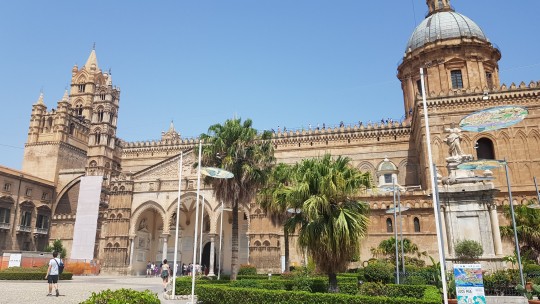
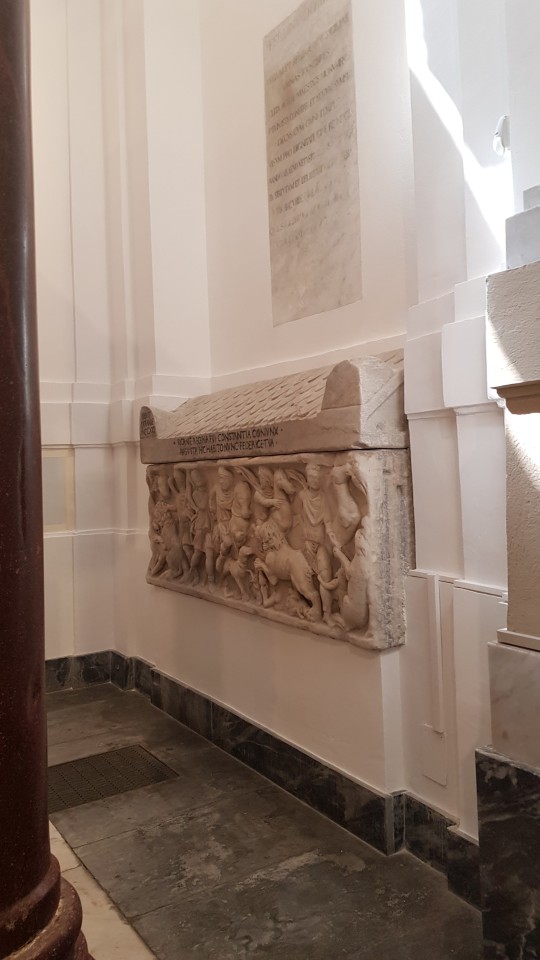
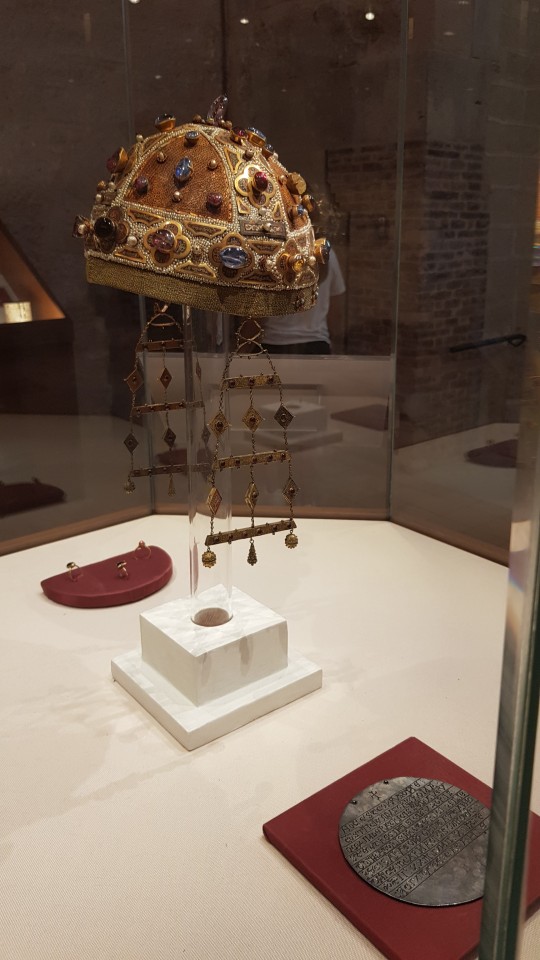

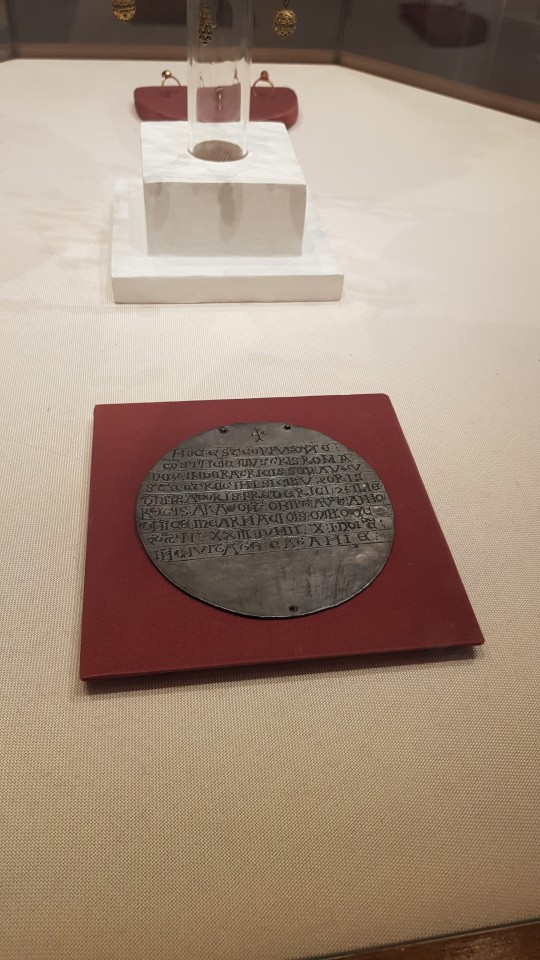
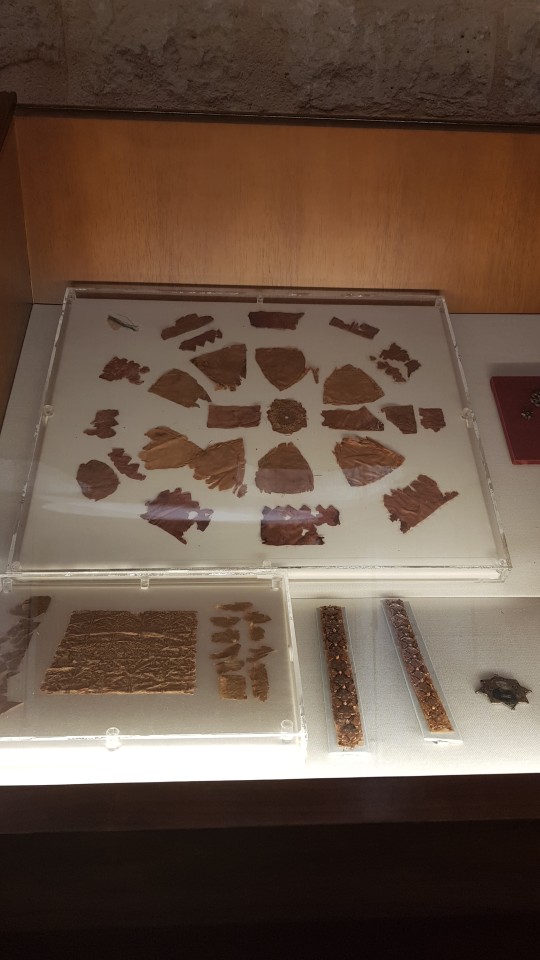
Burial and Funerary Equipment of Costanza of Aragon, first wife of Federico II of Sicily and Holy Roman Emperor, XII-XIII century, Treasury of Palermo’s Cathedral [my photos, July 2021]
“Inditi. MCCCCLXXXXL Fu apertu lu monumentu di marmora, chi è in lu locu, unni stannu li quattru monumenti di porfidi; in lu quali fu trovatu unu scrignu firratu, intra lu quali chi fu truvata una patena di ramu, supra unu pannu di oru, subtu la quali chi era un corpu mortu, in la quali patena lu epitaphiu Hoc est corpus &c. In testa di lu quali corpu chi fu truvata una coppula tutta guarnuta di petri preciuse, perni grossi & minuti, & piagi di oru massizzu & un cullaru di oru cum petri preciusi, li quali joyi foru livati & purtati in lu thesauru di la majuri Panurmitana ecclesia”
Francesco Daniele, I regali sepolcri del Duomo di Palermo riconosciuti e illustrati, p. 84
The origins of this crown are unclear. Some scholars say it’s the same headpiece (a Byzantine kamelaukion) worn by Ruggero II, first King of Sicily, by the end of the XII century, and used by Federico during his coronation as Holy Roman Emperor in 1220. Some others affirm it belonged to Costanza I, Federico’s mother, and was later bestowed to his first wife, namely Costanza of Aragon. Finally, a small number of scholars think the crown was especially crafted as part of the Queen’s funerary equipment.
It appears to have been made by Sicilian craftsmen and goldsmiths in Norman Palermo around the decades 70s and 80s of the XII century.
Whatever its origins were, Costanza died of malaria in Catania in 1222 and when her body was transported to Palermo to be buried in the Cathedral, she was interred wearing this precious crown, certainly a gesture of respect coming from her august husband.
In 1491 an official survey of the royal burials of Palermo’s Cathedral was held. The first tomb to be opened was Costanza’s. The Queen’s remains and funerary equipment are attentively described in a senatorial act dated October 18th, this account would be later reported in a compendium published in 1549 by Cesare Imperatore with some discrepancies between them. In the official act, the headpiece is described as a bonnet (coppula), while in the compendium it’s described as a crown (corona reali). At the moment of the opening of the grave, the officials could observe that, inside the sepulchre of marble (the other royal sarcophagi are instead made of porphyry), there was a casket of iron (unu scrignu firratu) which contained the corpse. The body was wrapped in golden cloth (supra unu pannu di oru, subtu la quali chi era un corpu mortu) and over it, there was a paten of silver (at first mistakenly described as made of brass given the oxidation state) with the inscription HOC EST CORPUS DO[ MI ]NE // CO[ N ]ST[ A ]NCIE ILLUSTRIS ROMA// NOR[ UM ] IMPERATRICIS SE[ M ]P[ ER ] AUGU// STE ET REGINE SICIL[ IE ] UXORIS // DO[ MI ]NI I[ M ]P[ ER ]ATORIS FREDERICI ET FILIE // REGIS ARAGONU[ M ] OBIIT AUT[ EM ] ANNO // D[ OMI ]NICE INCARNACIO[ N ]IS MILL[ ESIM ]O CC // X° XX° XXIII° IUNII X INDIC[ IONIS ] // IN CIVITATE CATANIE.
The crown consists of a hemispheric cap, framed by a golden band from which depart two stripes which divide the cap into four triangular segments. The headpiece is adorned by many precious stones, such as garnets, rubies, sapphires, topazes, amethysts and pearls. Among these stones, two granates stand out in their particularity: one of them contains the Neshki inscription which can be translated into “in God Isa Ibn Gibair (or Jubayr) trusts”; the other, cameo-shaped and possibly of Ellenistic origins, is engraved with the image of a gryphon. Clearly, it’s a case of recycling and they might not be the only ones. Finally, as an ulterior decoration, two golden pendilia decorated with cloisonné and garnets ornated the crown’s base.
In 1781, on the occasion of the Cathedral’s restoration works, the royal sarcophagi were moved to their current placement and once again opened. The funerary equipment (which comprised the Queen’s crimson robe, decorated with pearls and gold), was then pulled out from the sepulture and stored in the Treasury of the Cathedral (“li quali joyi foru livati & purtati in lu thesauru di la majuri Panurmitana ecclesia”), where they can still be admired.
Sources
Corona della regina Costanza d’Aragona
Isabelle Dolezalek, Arabic Script on Christian Kings: Textile Inscriptions on Royal Garments from Norman Sicily
Francesco Daniele, I regali sepolcri del Duomo di Palermo riconosciuti e illustrati
Il tesoro della Cattedrale di Palermo
I simboli della regalità: la corona di Costanza d’Aragona
La corona della regina Costanza di Aragona
#history#women#history of women#women in history#historical women#costanza d'aragona#Palermo#province of palermo#House of Hohenstaufen#norman swabian sicily#funerary archaeology#people of sicily#women of sicily#my photos
4 notes
·
View notes
Text
Me whenever my arms shows any sign of muscle definition: the body, the aesthetic, what kind of ellenistic beauty. I am a greek statue in the flesh, sculptured to be perfect!
6 notes
·
View notes
Note
I think you put the wrong tags in the Troy photo. It's supposed to be an ellenistic setting, which is greek, not roman (also, that series is horribly inaccurate in more than costume department, so I understand the confusion)
whoops! v true. fixing.
5 notes
·
View notes
Note
Hi ellen, i'm an ellenist y'know, cause i'm devoted to my one true queen (that's you) who owns my ass. My ass is yours. I'll love you in life, in death and in reincarnation. Please never stop writing fic. Ty ly bb.
AN ELLENIST im FLOORED. thank you sm xx
8 notes
·
View notes
Text

@superflippinkiwi-blog @batcatg-blog @glitterymemes @elmerdhuber @yeetforchash-blog @smileyoureinheavennow @theendtimescartoon @i-panicked-lol-blog @dis-bitchhh @viralbuzzhub-blog @ladyuniversalnova @ellenistic-blog @actualphandomtrash @one-unread-message-blog @maybaylline @nocrackcocaine @solongandgoodnight @cookiesocookie-blog @deadriptide @ryerbread @keybastik @bandsandyoutube @canceledastronaut @cihanli98 @linksterwho
0 notes
Photo

A pair of gold bracelets.
Palaiokastro, Thessaly (ancient Metropolis of Hestiaiotis)
1st century BC
0 notes